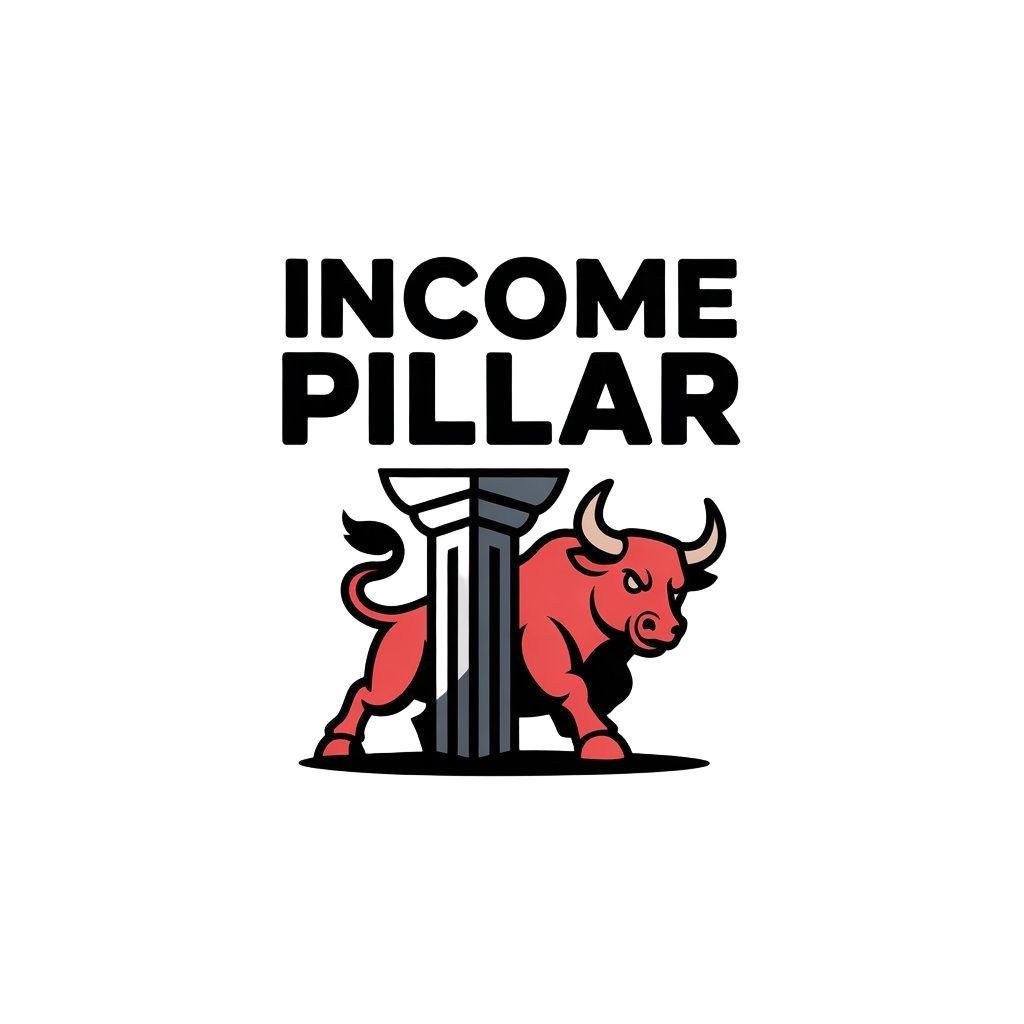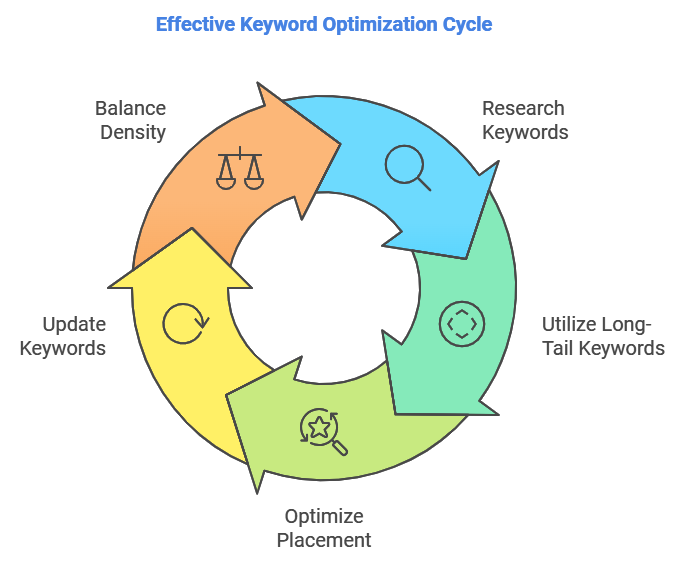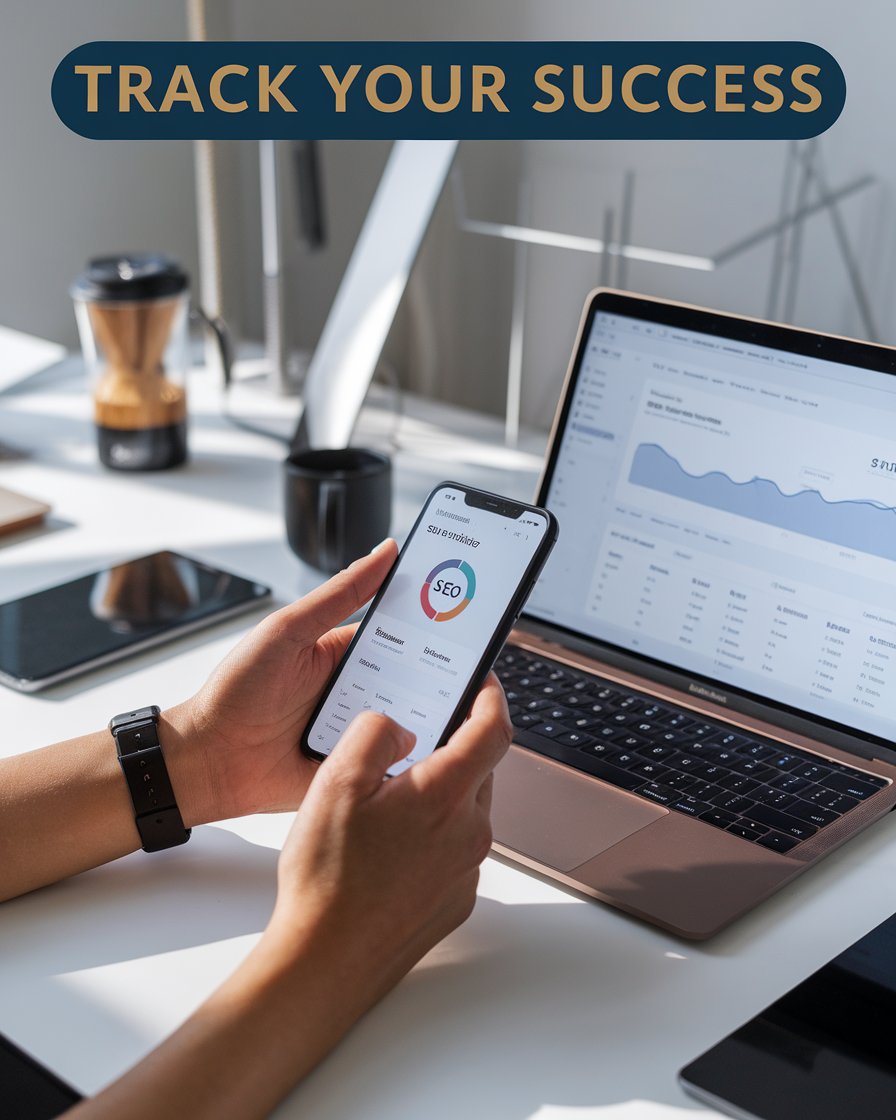Introduction
In today’s digital landscape, optimizing your blog for SEO is essential to attract readers and boost visibility, making it a vital tip to optimize your blog. By understanding and using the right keywords, bloggers can create content that speaks directly to their target audience while meeting search engine criteria. A well-thought-out SEO strategy not only improves search engine rankings but also aligns content with what users are actively searching for. With tools and techniques like keyword optimization, internal linking, and content auditing, bloggers can ensure that their posts remain relevant, engaging, and optimized over time.
Effective blog SEO isn’t just about keywords; it’s about crafting content that aligns with user intent, building authority through valuable links, and continuously refining based on performance metrics. By following best practices and implementing effective SEO tactics, bloggers can create a blog that not only ranks well but also serves as a trusted resource for readers, fostering long-term engagement and credibility.
Key Takeaways
- Use relevant, high-value keywords to increase blog visibility and attract the right audience while optimizing your blog for search.
- Align blog content with user search intent for improved engagement and optimize your content for better SEO performance.
- Develop valuable content that encourages organic backlinks to strengthen blog authority and improve your SEO over time.
- Strategically use internal links to guide readers through related posts and boost engagement.
- Regularly track SEO metrics like organic traffic and bounce rate to refine and improve strategies, as outlined in a comprehensive SEO guide.
- Conduct frequent content audits to ensure posts remain competitive, relevant, and optimized, which is good for SEO.
Optimizing Keywords for Better Blog On-page SEO
Getting the most from blog SEO really starts when you ensure your blog uses the right keywords. By zeroing in on high-impact keywords, blog owners can attract the right traffic and optimize their blog for search engines like Google. This section digs into finding a good balance between popular keywords and long-tail phrases that fit well with search engine optimization and what readers are looking for. Mixing high-traffic terms throughout your blog content can really help your site stand out on search engine results pages and improve image SEO. And by staying on top of the latest SEO trends and updating keywords over time, you ensure your blog stays relevant, especially with how search engine algorithms keep changing.
Identifying High-Value Keywords for Your Blog
Selecting high-value keywords is essential for effective blog SEO and should be part of a comprehensive content strategy. By analyzing search engine trends and user preferences, bloggers can identify keywords that draw high traffic and match their content goals. Using SEO tools like keyword planners helps pinpoint these terms and phrases, boosting a blog’s chance of visibility and providing insights to learn SEO. Focusing on these high-value keywords in titles, headers, and throughout blog content can enhance search engine rankings. It’s also beneficial to periodically reassess keywords based on SEO trends and optimize your blog posts, ensuring the blog remains relevant and optimized as search engine algorithms evolve, which is crucial in the ever-changing SEO landscape.
Balancing Short-Tail and Long-Tail Keywords
To achieve balanced keyword optimization, bloggers should use a mix of short-tail and long-tail keywords as part of their content strategy. Short-tail keywords capture broader interest, while long-tail keywords target users with specific queries, often leading to higher conversion rates, a crucial tip to optimize your blog. Incorporating both types allows for greater reach and specificity, positioning the blog to attract a variety of users at different stages of their search journey and optimize your content accordingly. For instance, while short-tail keywords help attract broad traffic, long-tail keywords capture niche interests, ultimately enhancing engagement and improving your SEO.
Top Strategies for Effective Keyword Optimization
1. Research and Choose High-Impact Keywords
Selecting the right keywords requires thorough research using SEO tools to identify terms that resonate with your target audience. High-impact keywords are often those with high search volume and relevance to your content.
2. Utilize Long-Tail Keywords to Target Specific Audiences as part of your blog SEO strategy for better results.
Long-tail keywords capture specific user queries, attracting readers further along in the decision-making process. By incorporating these keywords, blogs can improve reach among niche audiences.
3. Optimize Keyword Placement for SEO Impact
Ensure that primary keywords are strategically placed in titles, headers, and meta descriptions to boost your SEO and optimize your blog content effectively. This placement helps search engines understand the content focus, which can improve visibility in search results and ensure your content remains relevant in the context of blogging for SEO.
4. Update and Refine Keywords Based on SEO Trends
SEO is ever-evolving, so it’s crucial to regularly update keywords to stay aligned with new trends and search patterns. Refreshing keywords keeps content relevant and competitive, which is good for SEO in the long run.
5. Balance Keyword Density for Natural Flow
While keyword density matters, overusing keywords can harm readability and SEO. Maintain a natural flow to ensure that keywords fit seamlessly into the content, keeping the user experience in mind.
Crafting Content that Aligns with Search Intent
Aligning blog content with search queries is essential for engaging readers and boosting SEO. This approach involves understanding type of content users are searching for and structuring the blog post to meet those needs. By integrating relevant content that aligns with user search queries, bloggers can improve their chances of ranking in search engine results, keeping SEO in mind. Organizing each piece of content with clear headers, actionable insights, and seo tips makes it easier for readers to engage, driving quality traffic to your blog. Tailoring each section for seo writing not only optimizes SEO but also positions the blog as a trustworthy resource.
Understanding the Different Types of Search Intent
Search intent categories—informational, navigational, transactional, and commercial—each represent distinct user needs, which are crucial for a guide to SEO for bloggers. Informational searches aim to gather knowledge, while transactional searches signal a user’s intent to make a purchase or take action, both of which are important for effective SEO techniques. Understanding these types helps bloggers tailor their content to match specific user intents, making the blog more appealing and relevant to readers. By structuring content to meet these varied intents, bloggers can improve user engagement and increase their chances of ranking higher in search engine results, particularly for terms users commonly search for.
Structuring Content for User Engagement
Crafting content that is easy to navigate and read increases user engagement and satisfaction. Using headers, bullet points, and concise paragraphs, bloggers can guide readers seamlessly through the post. This structured approach not only makes content more digestible but also signals search engines about the main topics covered, aiding SEO. Clear formatting, paired with search-intent-focused writing, enhances a blog’s readability, improving both engagement rates and SEO performance. Structured content that meets user needs stands out, resulting in improved user experience and higher search engine rankings.
Case Study: How Aligning Content with Search Intent Boosted SEO for B2B Marketing World
B2B Marketing World, a resource site for business marketers, sought to improve their content’s alignment with search intent to boost SEO performance. Initially, their content creation was slow, with challenges in organizing articles around specific user intents. To address this, they integrated tools like keyword clustering and SERP analysis, allowing them to group keywords effectively and avoid keyword cannibalization. This approach enabled B2B Marketing World to identify distinct search intents and create focused articles to meet them, ultimately guiding their SEO landscape.
As a result, they saw improvements in SEO rankings, user engagement, and traffic growth as their articles became more specific and valuable for their audience. This case highlights how aligning content with precise user intents—whether informational or transactional—can significantly enhance both SEO rankings and user experience, showing the power of a structured, intent-focused strategy for long-term success.
Strengthening Blog SEO Through Link Building Off-Page SEO
Link building is a key element in boosting a blog’s authority and improving search engine ranking, both of which are essential aspects of SEO. High-quality blog posts for SEO that are informative and valuable are more likely to earn backlinks to your blog posts, which search engines view as indicators of trustworthiness. Effective internal linking within your blog also strengthens SEO by guiding readers to related content, enhancing engagement, and increasing page visits. Using well-planned link-building strategies helps improve search engine optimization and the visibility of your blog on search. This balanced strategy, which includes both internal and external links, creates a strong and credible blog that engages readers and performs well in search results.
Building Organic Backlinks with High-Quality Content
Creating valuable, shareable content naturally encourages other websites to link to it, building organic backlinks and enhancing your SEO efforts. This type of content—such as research-based articles, guides, and insightful blog posts—positions a blog as an authority in its field. By producing content that is both informative and unique, bloggers increase their chances of attracting organic backlinks, an important aspect of any ultimate guide to SEO. Search engines interpret these backlinks as endorsements of quality, boosting the blog’s credibility and search ranking. Organic backlinks not only improve SEO but also establish a blog as a trusted resource within its niche, contributing to off-page SEO efforts and positively impacting your SEO.
Using Internal Links to Enhance User Experience
Internal linking strategically connects relevant blog posts, creating a seamless user journey through the content, which is a crucial blogging for SEO technique. By guidingApologies for the cutoff. Here is the rest of the HTML, including the fourth H2 section, the associated H3 headers, and a final blockquote.
“To truly succeed in SEO, you need to prioritize searcher intent across every stage—research, creation, and distribution. Understanding what users hope to achieve and tailoring content to meet those specific goals is key to driving engagement and fulfilling their needs.” — Simon Ensor, Managing Director at Yellowball
Monitoring and Enhancing SEO Performance
To sustain and improve SEO, bloggers must regularly track and analyze the impact on your SEO by examining key performance metrics. This involves monitoring indicators like organic traffic, bounce rate, and time on page. Such analysis helps bloggers understand your content and its effectiveness, allowing for necessary adjustments. Continuous optimization shapes content to make it more competitive and aligned with SEO best practices. Additionally, refining keyword usage and updating sections based on insights from these metrics can lead to long-term SEO success and improved rankings in search engine results.
Key Metrics for Tracking SEO Success
Tracking metrics like organic traffic, bounce rate, and conversion rates offers insight into a blog’s SEO effectiveness. These indicators help bloggers gauge how well their content resonates with readers and where improvements may be needed. By monitoring these metrics regularly, bloggers can make data-informed adjustments to their SEO strategy. Focusing on relevant SEO metrics is essential for maintaining visibility and growth, as it allows bloggers to pinpoint successful tactics and areas needing refinement.
Regular Content Audits for Continuous Improvement
Performing regular content audits ensures that a blog stays relevant and optimized for search engines. During these audits, bloggers can evaluate keyword effectiveness, update outdated information, and use an SEO plugin to optimize your blog posts for better search engine performance. This proactive approach aligns with SEO best practices, keeping content fresh and competitive. By identifying opportunities for improvement through audits, bloggers can enhance the overall quality and relevance of their posts, which not only benefits SEO but also helps maintain reader engagement and trust.
Conclusion
Mastering blog SEO requires a thoughtful approach to content creation, keyword usage, and continuous optimization. By focusing on high-value keywords and aligning content with user search intent, bloggers can improve their chances of ranking higher in search engine results while delivering meaningful content. Link building, both internal and external, enhances a blog’s authority, making it more credible to both users and search engines.
Regularly reviewing SEO metrics and conducting content audits ensures that blog posts remain competitive and relevant. This ongoing effort not only boosts a blog’s visibility but also helps create a satisfying user experience that keeps readers coming back. With an effective SEO strategy in place, bloggers can transform their sites into valuable resources that thrive in search rankings and foster strong connections with their audience.



















